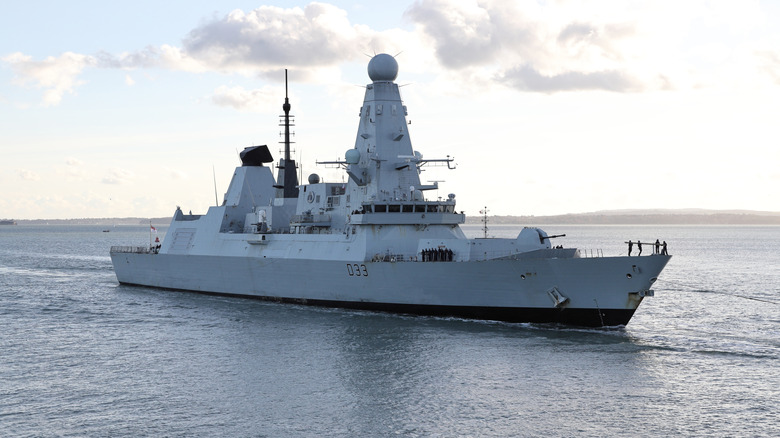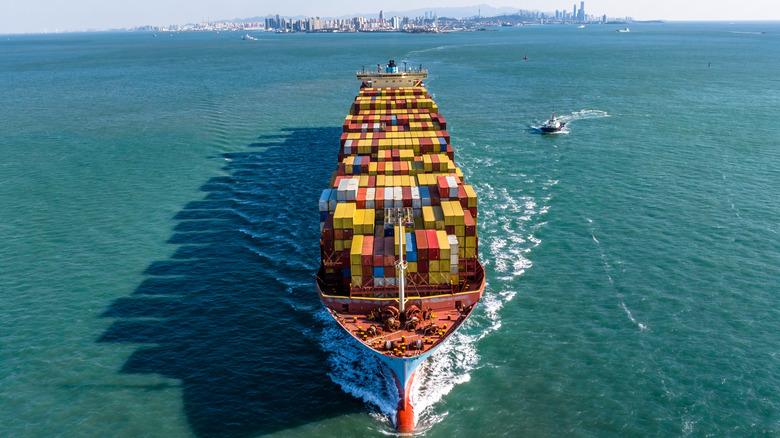As international locations world wide attempt to tamp down emissions (properly, a few of them, anyway), a serious goal for enchancment is the transport trade. Ships produce 3% of all of the world’s emissions per 12 months, greater than the entire nation of Japan. There are a selection of choices on the desk for bringing that quantity down, from biofuels to batteries to good old style sails (which are literally photo voltaic panels). However there’s one other one sitting proper there, which has truly been in use for many years: The facility of the atom.
As Bloomberg experiences, a joint effort is underway by Core Energy Ltd, HD Korea Shipbuilding & Offshore Engineering, and Southern Co to begin making industrial ships that run on nuclear. Particularly, they need to incorporate the brand new, cheaper, and theoretically safer sodium quick reactors beneath improvement by TerraPower, one among Invoice Gates’ main investments. If all goes properly, the primary new civilian nuclear ship in many years ought to hit the water in 2035.
After all, that is an enormous “if.” First, TerraPower must, , truly construct a working reactor. Even when it does, the ships might want to clear all types of regulatory hurdles. Even when the ships can do this, they can even have to get insured. I do not know when the final time you tried to insure a nuclear-powered automobile was, however it seems, it is not really easy. Even when you might get insured, sure international locations do not even permit nuclear ships to dock there in any respect.
There are causes for optimism across the tech, although. Lots of the points which have prevented wide-scale adoption of nuclear up to now are shifting. What’s extra, the U.S. Navy is beginning to poke on the concept once more, and if the Navy begins closely investing once more, civilian ships may simply observe.
The army may go nuclear (peacefully)
Because the Proceedings of the U.S. Naval Institute factors out, the U.Ok. is already taking a look at including smaller, fourth-generation nuclear reactors to floor ships in its navy. Proper now, solely plane carriers and submarines run nuclear reactors. For causes of value, nuclear was simply by no means as favorable as gas-turbine engines for many ships, so the tech did not unfold to the remainder of the floor fleet.
If the U.Ok. can change that equation with low cost reactors, nevertheless, abruptly nuclear begins to appear to be a fantastic possibility. For one factor, as a result of AUKUS — Australia, U.Ok., U.S. — safety pact, we have already got a system in place for sharing protection know-how with each other, particularly together with nuclear reactor tech. That might let any breakthroughs from both nation simply unfold to the opposite two. What’s extra, America is seeking to improve its nuclear-powered submarine fleet quickly anyway, which might very seemingly contain new reactor designs. These new designs might theoretically be put into the floor fleet, probably for all three international locations.
The Navy actually wants a heavy energy plant onboard future ships, as a result of the way forward for weaponry is electromagnetic. Present ship-based laser weapons (sure, we stay sooner or later) run at 60 kilowatts, however as they develop bigger and extra highly effective, they might begin requiring megawatts of energy. Railguns, one other rising weapons tech, additionally want completely enormous quantities of energy. Fuel turbines on fashionable floor ships can solely make a lot electrical energy earlier than they run out of gasoline. Nuclear reactors, in contrast, would solely have to be “refueled” (get new gasoline rods) as soon as each few many years — and these ships are solely meant to final a couple of many years anyway.
So the potential of the army going nuclear is actual. If it does, then count on issues like port laws begin to shift to permit for these ships to dock there. It additionally will increase the variety of shipyards that may work with the tech. Mainly, your entire infrastructure would get extra nuclear-friendly, opening the door for civilian ships to take the identical path.
The issues, and threats, of civilian nuclear ships
There even have been nuclear-powered civilian ships up to now, although not many. The Soviet Union was first to it, crusing an atomic icebreaker ship within the Nineteen Fifties. America put out a nuclear cargo ship in 1959, the NS Savannah, nicknamed the Peace Ship. Germany adopted in 1964, then Japan in 1969. The Soviet Union obtained its personal cargo ship in 1986, not typically thought of the nation’s most interesting 12 months in nuclear energy (Chernobyl).
As we speak, Russia truly nonetheless operates a number of the icebreakers, in addition to one lone cargo ship, the NS Sevmorput. All of the others have been retired. They had been simply too costly to function, and plenty of international locations did not need them docking there in any respect. And that was earlier than Chernobyl and Fukushima soured lots of people on the entire concept of nuclear energy.
There are different points which have gotten worse since these days, notably piracy and direct rocket assaults on cargo ships. “Take a look at me: I am the captain now” will get lots scarier when there is a fission reactor onboard that the brand new captain might threaten the world with. And if, say, Houthi rebels or different teams carry on sinking service provider ships, that might develop into a possible nuclear incident or ten.
Different potential positive factors
However as many local weather activists have lengthy argued, humanity must do one thing to convey emissions down, and nuclear is a confirmed know-how that is proper there. It gives a large energy output that basically does not have to be refueled, which saves on long-term prices and retains the ship crusing for for much longer than conventional engines (a container ship wastes one month out of the 12 months simply in refueling time).
Much less appreciated is the truth that nuclear-powered ships are simply sooner. Not as a result of they’re actually sooner, however as a result of they don’t have any downside operating at 100% pace. Trendy ships usually solely run at 60-70% pace as a result of — you guessed it — they’re making an attempt to preserve gasoline. Sooner transport instances are good for enterprise, each for the transport firm itself that may run extra routes and for the businesses that wish to get their items into warehouses as rapidly as potential.
Core Energy and its companions are a great distance from truly getting a small, low cost, theoretically safer fourth-generation reactor onto an precise ship. However they might already be in a race. In January 2024, China unveiled plans to construct the only greatest container ship in historical past, which might be powered by a thorium reactor. Thorium is extra environment friendly and extra plentiful than uranium, which present reactors use. Placing thorium right into a reactor is extra sophisticated, although, which is why no one else has pursued the tech. China now claims (with out a lot proof) that it may accomplish that. If it is proper, then we is perhaps in one more competitors with that nation.




